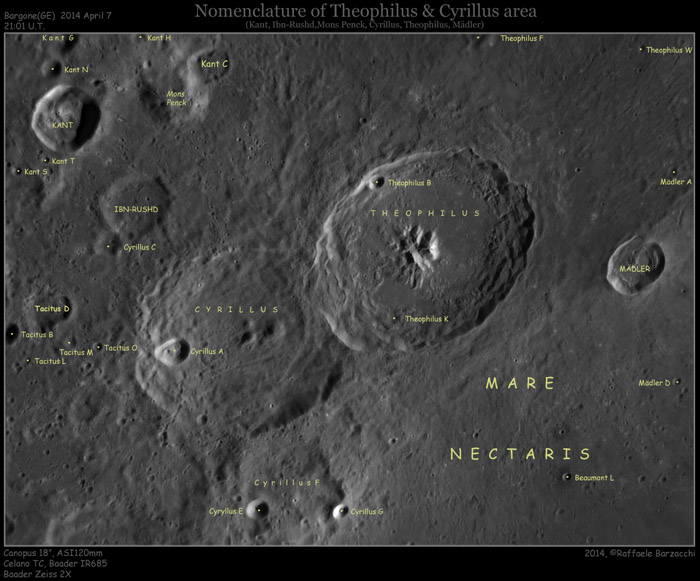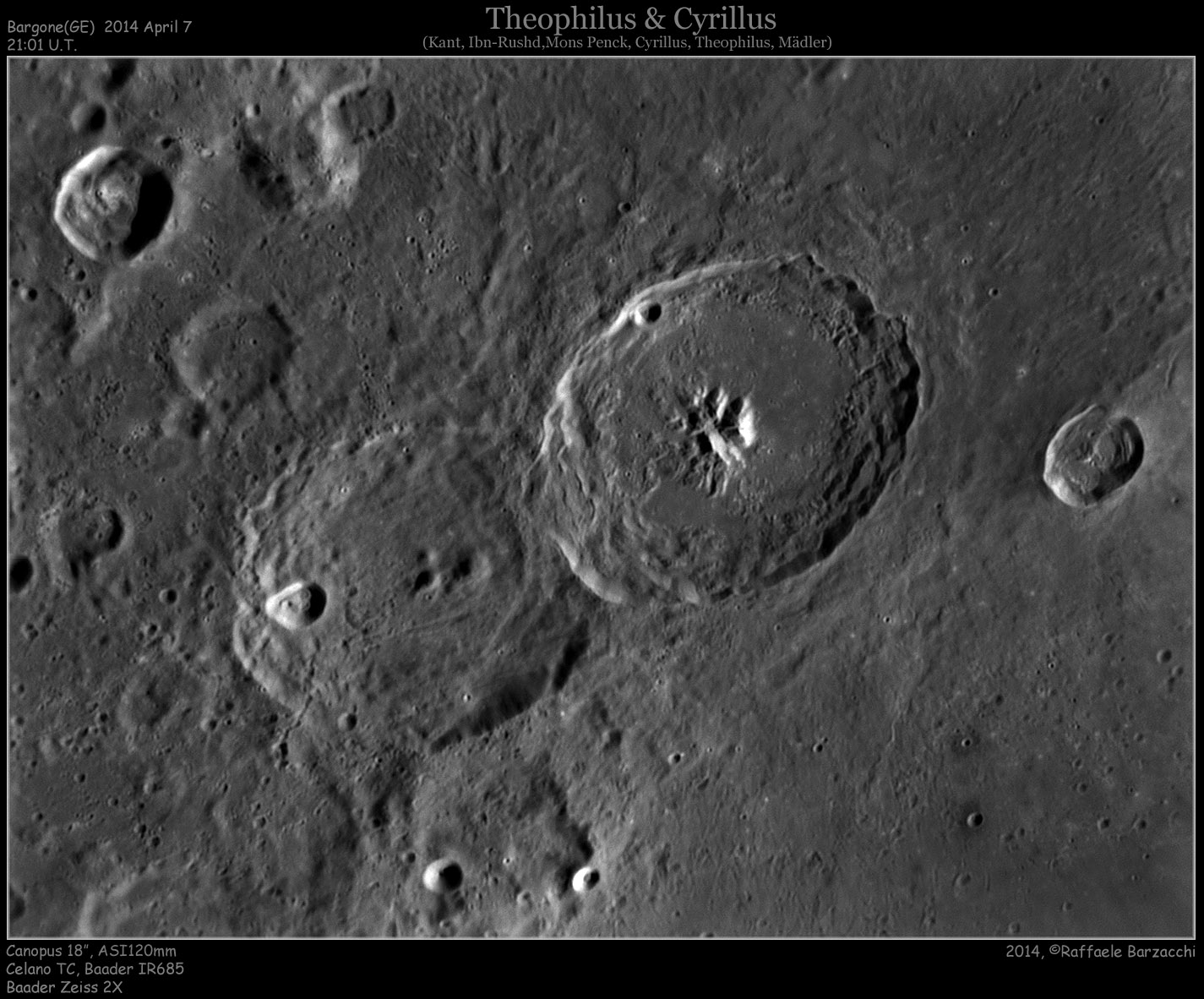Difference between revisions of "May 10, 2014"
(Created page with "__NOTOC__ =Bright Rim= <!-- ws:start:WikiTextHeadingRule:0:<h1> --> <!-- ws:start:WikiTextLocalImageRule:14:<img src="/file/view/LPOD-May10-14.jpg/507881018/...") |
|||
| Line 6: | Line 6: | ||
<em>image by [mailto:raffaele.barzacchi@gmail.com Raffaele Barzacchi], Italy</em><br /> | <em>image by [mailto:raffaele.barzacchi@gmail.com Raffaele Barzacchi], Italy</em><br /> | ||
| + | <table class="wiki_table"> | ||
| + | <tr> | ||
| + | <td><!-- ws:start:WikiTextLocalImageRule:15:<img src="/file/view/LPOD-May10b-14.jpg/507881992/LPOD-May10b-14.jpg" alt="" title="" style="width: 850px;" /> -->[[File:LPOD-May10b-14.jpg|LPOD-May10b-14.jpg]]<!-- ws:end:WikiTextLocalImageRule:15 --><br /> | ||
</td> | </td> | ||
<td>Using a large telescope for an amateur (18"), Raf has acquired an image of the Theophilus area that compares favorably with the LRO Wide Angle Camera image of the same area. To make the comparison even more visually captivating, Raf added nomenclature from the <em>Gazetteer of Planetary Nomenclature</em>, using yellow font, just as [http://bit.ly/1giHbhv QuickMap] does. The image itself shows many interesting features. The now well-known impact melt ponds on the north flank of Theophilus show up as smooth, featureless areas. And the dark halo craters (of impact origin), such as Beaumont L are also nicely visible. What is more subtle is the change in brightness of the upper inner rim of Theophilus. Look along the top of the brightly illuminated (west) side of the crater and you can easily see that the upper part of the rim is brighter than the lower part. LRO high resolution [http://bit.ly/1izlTAs images] confirm what Raf has captured. A similar band of brightening has been [http://lpod.wikispaces.com/July+9%2C+2012 noticed] at other large craters. As proposed earlier, is the bright upper part, fragmental fallback ejecta that may contain anorthosite or is it bright simply because it is fragmental (as is ray material)?<br /> | <td>Using a large telescope for an amateur (18"), Raf has acquired an image of the Theophilus area that compares favorably with the LRO Wide Angle Camera image of the same area. To make the comparison even more visually captivating, Raf added nomenclature from the <em>Gazetteer of Planetary Nomenclature</em>, using yellow font, just as [http://bit.ly/1giHbhv QuickMap] does. The image itself shows many interesting features. The now well-known impact melt ponds on the north flank of Theophilus show up as smooth, featureless areas. And the dark halo craters (of impact origin), such as Beaumont L are also nicely visible. What is more subtle is the change in brightness of the upper inner rim of Theophilus. Look along the top of the brightly illuminated (west) side of the crater and you can easily see that the upper part of the rim is brighter than the lower part. LRO high resolution [http://bit.ly/1izlTAs images] confirm what Raf has captured. A similar band of brightening has been [http://lpod.wikispaces.com/July+9%2C+2012 noticed] at other large craters. As proposed earlier, is the bright upper part, fragmental fallback ejecta that may contain anorthosite or is it bright simply because it is fragmental (as is ray material)?<br /> | ||
Revision as of 22:48, 1 January 2015
Bright Rim
image by Raffaele Barzacchi, Italy
 |
Using a large telescope for an amateur (18"), Raf has acquired an image of the Theophilus area that compares favorably with the LRO Wide Angle Camera image of the same area. To make the comparison even more visually captivating, Raf added nomenclature from the Gazetteer of Planetary Nomenclature, using yellow font, just as QuickMap does. The image itself shows many interesting features. The now well-known impact melt ponds on the north flank of Theophilus show up as smooth, featureless areas. And the dark halo craters (of impact origin), such as Beaumont L are also nicely visible. What is more subtle is the change in brightness of the upper inner rim of Theophilus. Look along the top of the brightly illuminated (west) side of the crater and you can easily see that the upper part of the rim is brighter than the lower part. LRO high resolution images confirm what Raf has captured. A similar band of brightening has been noticed at other large craters. As proposed earlier, is the bright upper part, fragmental fallback ejecta that may contain anorthosite or is it bright simply because it is fragmental (as is ray material)?
|
COMMENTS?
Click on this icon File:PostIcon.jpg at the upper right to post a comment.




